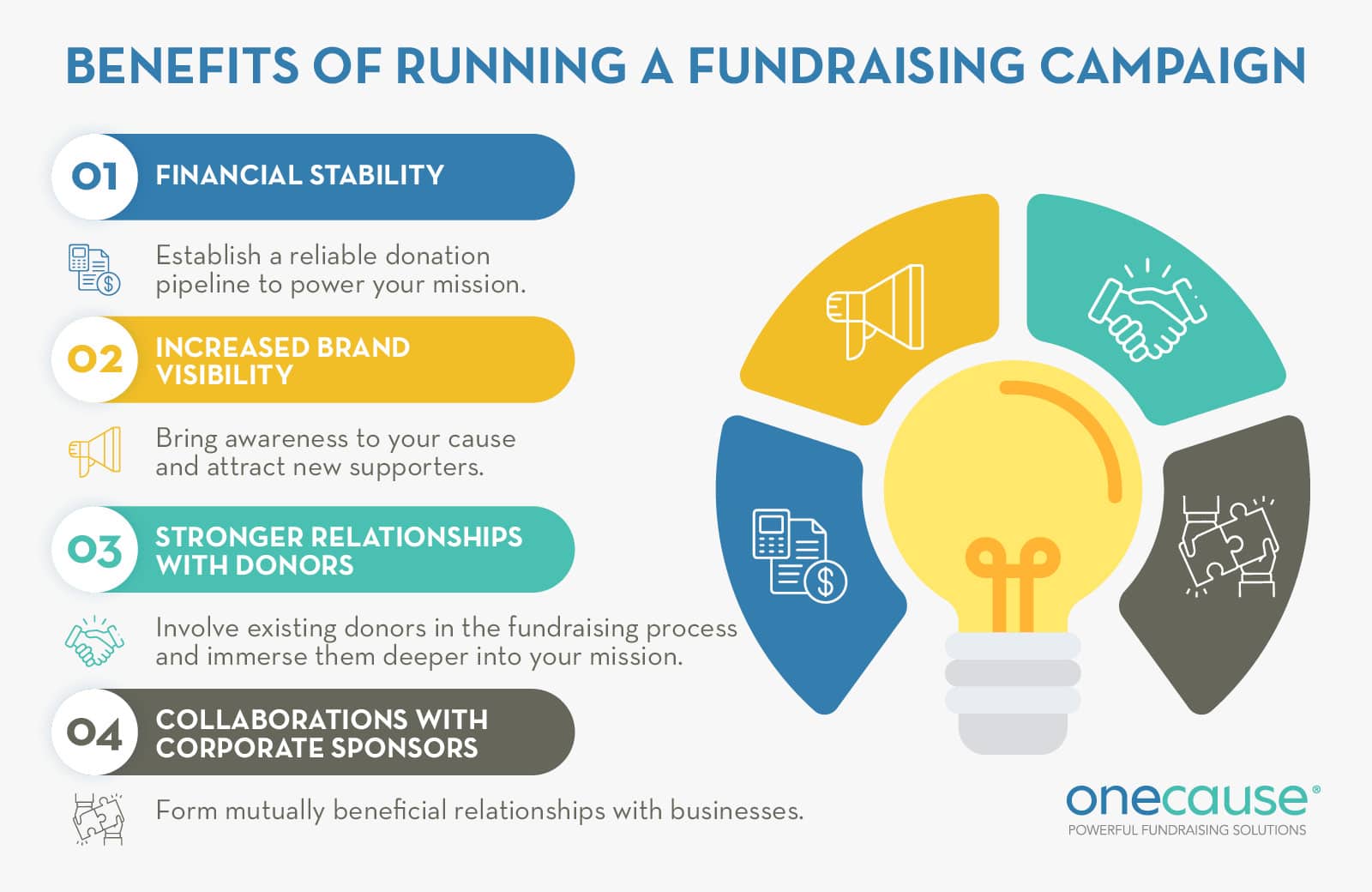Top Nonprofit Fundraising Ideas: Cutting-edge Approaches to Increase More Funds
Top Nonprofit Fundraising Ideas: Cutting-edge Approaches to Increase More Funds
Blog Article
The Role of Community Engagement in Nonprofit Fundraising: Building Lasting Relationships for Sustainable Assistance
Neighborhood interaction is increasingly identified as an essential element of effective nonprofit fundraising. By fostering real relationships with neighborhood stakeholders, organizations can grow trust and commitment, which are important for lasting support. Nonetheless, the approaches and techniques used to engage neighborhoods differ widely, raising important concerns concerning efficiency and effect. What are the very best methods for growing these crucial links, and exactly how can nonprofits gauge their success in this arena? Comprehending these characteristics might considerably affect the future of fundraising efforts and the overall objective of not-for-profit companies.
Recognizing Neighborhood Involvement
Neighborhood engagement is a vital part of effective nonprofit fundraising initiatives. Nonprofits should recognize essential stakeholders-- such as neighborhood members, neighborhood companies, and other companies-- to create effective interaction methods.
Effective area interaction is predicated on energetic listening and responsiveness to the needs and rate of interests of the community. This procedure involves obtaining feedback, comprehending area characteristics, and guaranteeing that the company's mission straightens with neighborhood priorities. Involving the community can take numerous forms, consisting of public meetings, volunteer chances, and partnership efforts, each designed to motivate participation and investment in the company's goals.
Moreover, community interaction must be approached as a continuous discussion as opposed to an one-time effort. By promoting a comprehensive environment where community voices are heard and valued, nonprofits can build a strong foundation for future fundraising ventures. Eventually, a deep understanding of area engagement encourages companies to create authentic connections that improve their total performance and sustainability.
Benefits of Strong Relationships
Strong partnerships formed through neighborhood engagement yield many advantages for not-for-profit fundraising initiatives. First and foremost, these relationships foster count on and reliability, necessary components in motivating contributors to contribute. When possible fans see a nonprofit proactively involved in their community, they are a lot more most likely to count on its goal and influence.

Moreover, these partnerships help with reliable communication. Nonprofits can utilize their connections to share stories of influence, updates, and needs, ensuring that fans stay enlightened and involved. This open line of communication not only enhances bonds but likewise urges word-of-mouth promotion, broadening the not-for-profit's reach.
Lastly, solid neighborhood connections can draw in new companions and enrollers. Services and individuals are much more likely to align with organizations that show significant neighborhood involvement, offering extra sources and support that can significantly improve fundraising abilities. Hence, cultivating durable relationships through neighborhood interaction is indispensable to a nonprofit's lasting fundraising success.
Techniques for Efficient Interaction
Exactly how can nonprofits successfully involve their neighborhoods to improve fundraising efforts? Establishing targeted techniques is vital for promoting significant connections. First, leveraging social media systems makes it possible for companies to share their mission dynamically and interactively, reaching a wider audience. Regular updates, involving material, and calls-to-action can galvanize neighborhood rate of interest and participation.
2nd, holding neighborhood occasions, such as workshops, volunteer chances, or fundraising drives, helps with face-to-face communication, permitting nonprofits to showcase their influence and initiatives. These occasions not only elevate funds however also cultivate connections and allow area members to involve straight with the cause.
Third, applying individualized communication strategies can boost involvement. Customizing messages to particular donor segments based on interests and previous contributions fosters a feeling of belonging and financial investment in the organization's view it now goal.
Finally, developing partnerships with neighborhood companies and area leaders can magnify outreach efforts. Joint initiatives can improve visibility and reputation, demonstrating a cumulative commitment to the neighborhood's health. By integrating these methods, nonprofits can construct long lasting connections that boost fundraising efforts and drive sustainable assistance.
Gauging Engagement Success
While involving the area is essential for effective not-for-profit fundraising, measuring the effectiveness of these involvement efforts is similarly vital. Establishing clear metrics allows companies to assess exactly how well they are getting in touch with their audience and attaining their fundraising goals. Trick performance signs (KPIs) such as contributor retention rates, volunteer participation levels, and involvement on social media sites platforms supply tangible data for evaluation.

On a regular basis evaluating these metrics allows organizations to pivot their methods when required, making certain that neighborhood engagement continues to be aligned with their general mission. Moreover, sharing these results next page with stakeholders promotes openness and builds trust fund, encouraging more community involvement. Inevitably, a robust dimension framework not only educates future fundraising initiatives yet also enhances the partnership between the nonprofit and its supporters, preparing for sustainable success.
Case Researches in Neighborhood Impact
Numerous study illustrate the extensive effect that community interaction can have on not-for-profit fundraising success. One significant example is the "Something to chew on" effort, where a regional food bank partnered with institutions and businesses to host community dinners. These events not just raised funds yet also promoted a sense of belonging amongst individuals, significantly increasing contributor retention rates.
Another compelling situation is the "Eco-friendly Spaces Job," which involved neighborhood homeowners in the revitalization of city parks. This campaign not just amassed financial backing from local companies but likewise cultivated a volunteer base that added to continuous upkeep and programs. The sense of ownership and pride among community participants equated right into continual contributions.
In the realm of arts, the "Art for All" campaign effectively involved neighborhood musicians and customers to produce collective art installments, leading to enhanced exposure and contributions for a regional arts nonprofit.
These examples highlight that when nonprofits prioritize area participation, they can produce long lasting relationships that enhance fundraising efforts, making certain lasting assistance and promoting a vivid neighborhood culture. Such cases demonstrate that community involvement is not merely a strategy yet a crucial column of nonprofit success.
Conclusion
Finally, area interaction is indispensable to the success of nonprofit fundraising initiatives. By promoting solid partnerships with neighborhood stakeholders, companies boost trust fund and integrity, resulting in improved donor retention and loyalty. Implementing effective involvement techniques and gauging their effect guarantees that nonprofits can prosper and adapt. Ultimately, a durable foundation of community assistance not just enhances fundraising potential but additionally grows a culture of collaboration, essential for achieving lasting business objectives and maintaining purposeful impact.
Nonprofits need to identify essential stakeholders-- such as community participants, neighborhood companies, and various other organizations-- to develop effective engagement techniques.

In verdict, community engagement is indispensable to the success of not-for-profit fundraising efforts.
Report this page